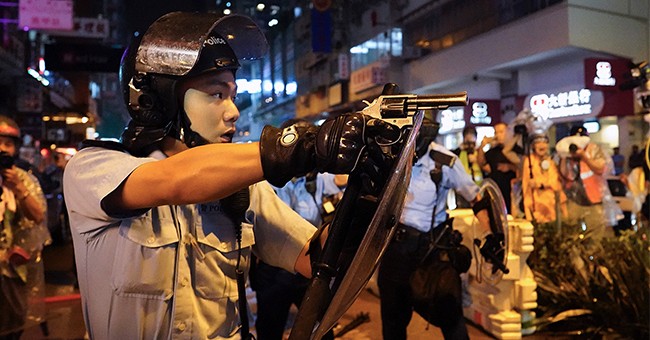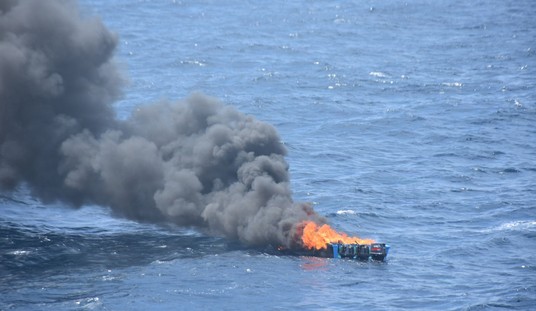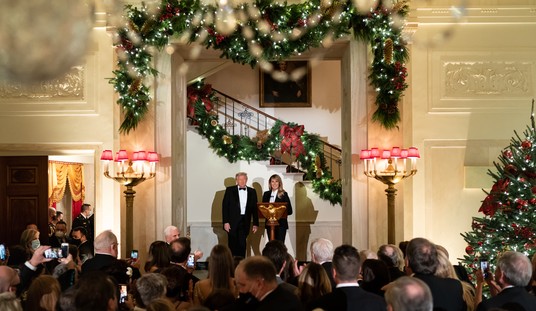
There’s a gun pointed at Hong Kong’s soul. On Thursday May 21, 2020, the Chinese announced that it will consider the “Establishment and Improvement of the Legal System and Implementation Mechanism for the Safeguarding of National Security in the Hong Kong Special Administrative Region’ setting off global concerns that China will end the “One Country, Two Systems” principle that has governed Hong Kong since it was returned to China by the British. How did this get here?
Repercussions of COVID-19
Recovering and re-opening to a “new normal” is a dilemma that besets every nation and society affected by COVID-19. China is no exception and the ruling Communist Party faces tough challenges. Its bilateral relationship with the United States has taken a beating and the timing could not have been worse. After laborious trade negotiations between the governments of Presidents Xi Xinping and Donald Trump, the US-China Phase One Trade Agreement, that would have begun to address serious deficiencies in the economics between the two nations went into hibernation as the novel coronavirus swept the planet.
As the world reopens, the Chinese are right to worry that they will be dealing with a new planet, one that will not quite be ready to forgive or forget that the Chinese mistakes in handling the events of Wuhan city in Hubei province plunged the planet into reliving the nightmare of the great plagues.
So much for China’s “Long View” economic strategy to become the dominant locus of technological knowledge, by whatever means necessary, or the monopoly point of critical elements of the global supply chain, thus establishing a worldwide dependency on China rivaling the position of the United States.
That is just not going to happen anymore. China’s future will soon be beset by what is sure to be an emergence of initiative for industries to reset their supply chains from rare earth “dirty industry” sources through manufacture of components and finished goods of every item imaginable so that the world will not face single point failure risks for the foreseeable future. And the leader of the effort to build this “Next World Order” coalition of the willing, much to the Chinese Communist Party’s lament, will likely be the United States of America.
Chinese Insularity Returns
The Chinese cultural reaction to external adversity has been the same for 10,000 years. They withdraw internally, flush dissent from their ranks, then carry on.
In 2019, China found itself increasingly the underdog in negotiations with the US because of a combination of uprisings in Hong Kong, trouble with indigenous groups such as the Uyghurs, increasing problems with industrial espionage and counterfeiting that hurt China domestically and internationally, and food supply problems including agricultural failures owing to yet another of planet Earth’s nasty surprises, the Armyworm moth.
And then the SARS-CoV2 virus which causes COVID-19 appeared. The simple fact that history will record from the moment is that the Chinese were unprepared for the novel coronavirus. It forced the Chinese to resort to desperate measures importing doctors from other parts of the country, going into forced quarantine, and employing forces reserved for germ warfare to combat the virus in the streets; all of it to buy time until adequate medical infrastructure to deal with the case load could be established.
Still, the virus escaped because the Chinese failed to recognize the danger of the pathogen early enough. It caused not just a medical problem but a confidence in the government problem, something far more stop of mind to the Chinese Communist Party that relies on spreading an ethos of Chinese hyper-patriotism to the motherland as part of its system of social control.
That is a domestic crisis that creates regime stability worrisome consequences. If you look close enough, we are seeing the artifacts of these fissures. I’m watching three things in particular about China right now that I think are critical to understand just exactly what kind of post-COVID 19 reopening of bilateral negotiations between the US and China will be colored by.
Second Wave Risk
There are 58.5 million people in Hubei Province in China, the epicenter of the coronavirus pandemic. There are 1.393 billion people in China. That is only 4.2 percent of the population of China. That means 95.8 percent of the most populous country on this planet remain at risk.
Unlike the United States, which is experiencing COVID-19 uniformly throughout this nation, the Chinese took the strategy of isolating it geographically. And that’s a very dangerous position to be in given that the SARS-CoV2 virus is now known to be highly infectious and has found a human reservoir within which to linger.
Later this year, come next flu season, these vastly different first wave coping strategies will produce divergent challenges to the US and Chinese medical communities. Of the two, I believe the Chinese will have the more vulnerable, and potentially more dire, epidemic explosion curves to worry about.
Where the US has a highly distributed emergency response infrastructure that, despite its share of human frailty problems, nevertheless responds and adapts piecemeal that is ultimately “good enough for government work”, in China it’s all about a top down control system that starts in Beijing and works it’s way out though the CCP’s infrastructure.
Stress that concentrated system of power enough, and it could break down catastrophically. It is something to keep a wary eye on. China would not be the only modern empire that has collapsed on its own weight in recent memory. It wasn’t’ too long ago that there was this thing called the Union of Soviet Socialist Republics. It exists no more.
Chinese Domestic Propaganda
An artifact of a regime worried about the stability of its grip is easily observed by watching the official press of a country. Just like the analysts deep in the cubicles in the CIA buildings in McLean, Virginia, I set my iPhone up to take news alerts from non-US sources like China Daily, China Global and Al Jazeera that bring in raw data suitable for analysis. They are far more informative to a China watcher that anything you’ll find from a US media source, or even a curated assessment from an intel or think tank source.
These raw sources are like listening to an orchestra. They trumpet the messages of the CCP. And like music, you listen between the notes to feel the tenor of the composer. The more energetic, the more worry.
Right now, Chinese headlines trumpet supreme confidence in the leadership of the highest officials in China, the confidence of the CCP apparatus and the tangible accomplishments it is achieving. What does that really tell you? There are cracks at the seams that the Chinese government knows it must solve to regain the confidence of the people.
There is also a heavy emphasis on reporting every day on how few confirmed cases appear in the whole on China. That is clearly a message to soothe the populace, 95.8% of which remains at risk. And a very risky message for the CCP if, as may be happening, their massive contract tracing effort to locate and isolate infection clusters fails, and a second region falls victim to an outbreak episode.
Here’s the reality, SAR-CoV2 has an R-Zero of 2.3. It’s highly infectious. It will do what it wants. China’s massive investment in contact tracing is like trying to catch smoke with your bare hands. In the US, we should be closely monitoring developments in China as it will tell us whether the notions of our own government entities to chase similar smoke have any merit.
The Significance of Hong Kong
And then we get to Hong Kong, where just prior to COVID-19, Beijing was dealing with its greatest challenge to the central governance model of Chinese society and its emphasis on social conformance scored through a new level of technology enabled behavioral monitoring.
In January, 2020, people in Hong Kong were rallying in the streets carrying US flags and quoting lines from the Declaration of Independence. They were expressing their desire to continue the Two-China policy with Hong Kong being the flagship of the most Westernized socio-economic model within Greater China.
This former British colony coming to value the social values of another upstart former British colony has been clashing with the CCP model of society for years. The problem has been becoming more acute as more regions of China have become industrialized economic centers of their own; and the travel and family connections have flourished between Hong Kong and cities like Chengdu, Beijing, Tianjing, Shanghai, Suzhou, Hangzhou, Shenzhen, Guangzhou, Chongqing, and Wuhan.
This is clearly an alternate universe trying to occupy the same space as the CCP universe of Mao Zedong. And, as the world reopens from the quarantine of COVID-19, the question of which of these two China’s will prevail continues to come to a head.
And so here we are today with reports appearing that China is considering new national security laws that would effectively quash the spread of Hong Kong into the other industrial centers of China so that the dream of the Maoists can live on.
Always remember that, in China, “national security” means the security of the ruling class.
Net Assessment
Dispassionately, I don’t see much downside to the US, or the world, regardless of which direction China goes as it navigates how It will get past this latest of many crises of the mercantile class that have recurred throughput Chinese history.
Hopefully they won’t resort to the traditional solution of killing all the middle class and starting anew with a simpler agrarian class ruled by dynastic elites. But it should not be lost to any China watcher that in 2019, there was a visit by President Xi Xinping to the north recalling Mao’s march to northern China to shelter from the Japanese and Chinese Nationalists to steel the soul for the coming Chinese Communist Revolution. Such symbolism carries weight in CCP affairs that westerners ignore at our expense.
But China is a sovereign nation and, regardless of our morals, we in the US will be spectators to this coming battle for the control and fate of Chinese society. Regardless of how it turns out, we are still going to have to deal with them as a critical bilateral trading partner in a US future where the affairs of the Pacific rim are vital to our national interest.
In terms of power projection, the next China may be more belligerent, or it may be more accommodating. That is an area where the US is not a spectator, but in fact, holds a pretty good hand of cards as we feel our own way into the post-COVID world of distributed global supply chains, repatriated industries and coalitions of willing nations that will look to us as their future guarantor of unfettered commerce.














Join the conversation as a VIP Member